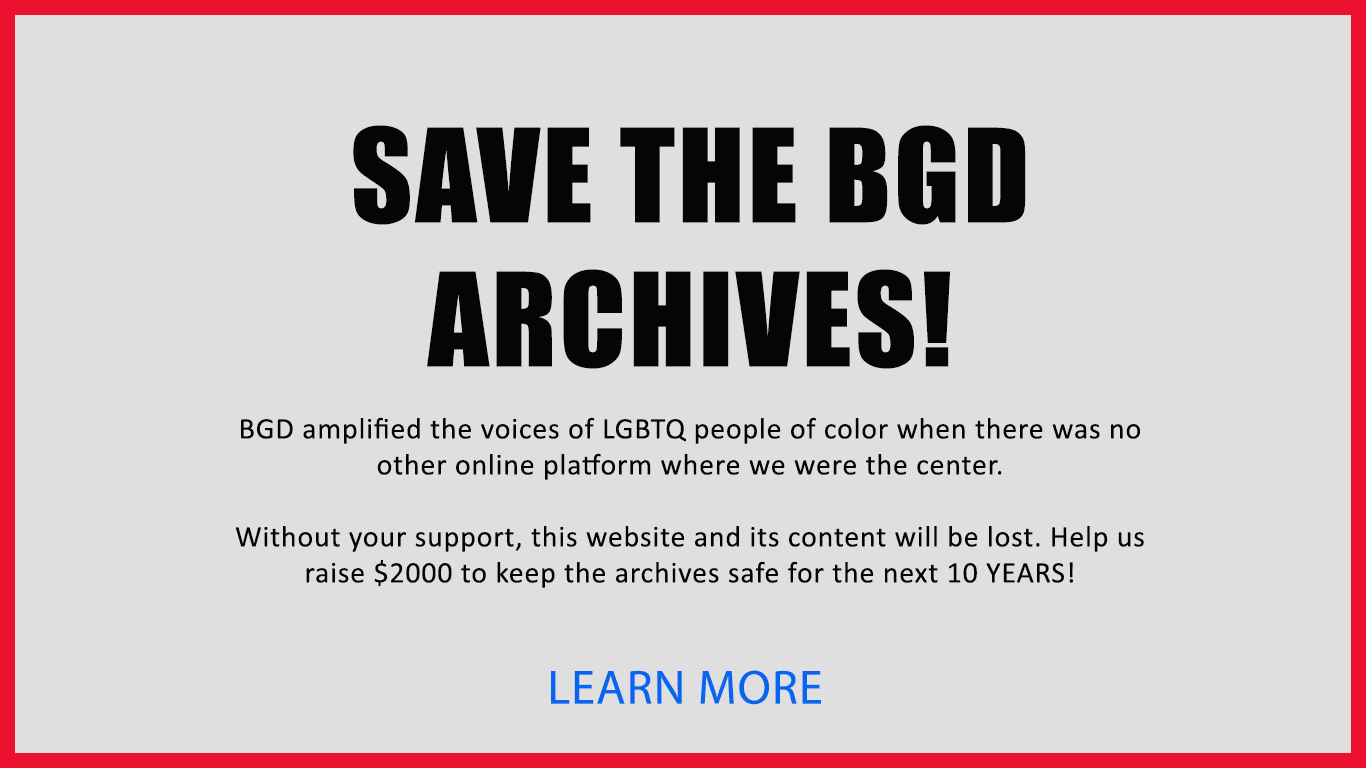by Spencer Lane

[A light-brown-skinned Black woman with closed fists and small chains around her wrists looks at the camera.]
My incentive was simple. I’d lived by the dictates, moral and otherwise, of those around me and in doing so, I’d lost sight of myself. The act of declaring my love for men and women didn’t entail turning the doorknob and tip-toeing out of the closet; no, I bulldozed the door down. The reaction from my family and friends was a mixed bag. Some accepted without fanfare, while others voiced their disapproval in a myriad of ways. My attempt to hug my uncle’s wife at a special event, for example, was sharply dodged because she thought I was trying to hit on her.
Once I had established that I was completely comfortable in my skin, I sought other persons deemed by society to be “deviant.” In that spirit, I found my niche in the dungeons of BDSM parties, and joyfully put myself on the received end of a whip, a cat o’ nine tails and a bare hand. Once, I was chained to a cross by a black dominant while he and his wife took turns spanking me with various implements. It made for a very pleasant change of pace, and nothing was done without my knowledge and consent. I pegged a man at another play party, which was fun, but there still remained an itch that needed scratching. I still felt like I was existing, not living.
Spring of 2015 marked my foray into the world of swinging, and a Google search yielded the name of an organization that hosted high end erotic parties in Brooklyn once a month. The application process was rigorous and membership was only open to heterosexual couples and single women. As I pondered how best to answer the questions and which photos to submit, excitement and a bit of fear surged through me. Was I really going through with this? Would I see other people of color at the parties? Was swinging even “a thing” in our community? I hadn’t a clue.
BGD is a reader-funded non-profit.
GIVE BACK and help amplify marginalized voices.
The days turned to weeks and I surmised that I’d been rejected only to receive an invitation to my first party, which had a medical theme. The hairs at the back of my neck stood as I lingered at the door of the venue, wondering what adventures awaited on the other side. Some men walked around in white coats with stethoscopes around their necks, while ladies flitted about in highly sexualized versions of a nurse uniform. Deep house music pulsed from the speakers as couples and trios mingled, caressed and kissed. Soon enough, the raw business commenced.
They were a stunning aggregation of people, and not just in terms of appearance. They were lawyers, artists, accountants and more. They veered young; the median age was around 35. Here, they could be free to explore sexually in a safe and welcoming environment without repercussions. Discretion was the name of the game and consent was non-negotiable. As I processed everything, I was approached by a couple who invited me to play. We did, but peering at the tangle of bodies in various states of undress, I saw no evidence of kinky hair, Jackson 5 nostrils and cocoa goodness. Nonetheless, I remained till the party’s conclusion and, reservation aside, I was quite pleased.
The subsequent parties weren’t much better on the diversity front, but when I finally encountered black members, we connected like old friends at a long overdue reunion. I hadn’t any trouble conversing with white attendees, but with other black people, I could speak plainly about navigating white spaces as a person of color. We must have spent at least thirty minutes asking each other questions before anything physical transpired. How did you find out about these parties? What got you into the swinger scene? What’s your sexual orientation? What’s the ratio of black to white people on the whole, anyway?
Some time later, I had a conversation with one of the black women I played with about what could be done by the organizers to attract more melanin to their events. She suggested that the lack of people of color could only be turned around once we removed the stigma placed on open sexuality. I thought this was a fair assessment, but I didn’t think the stigma was limited to the black community alone. Americans in general espouse very dated views about sex, which generally are not held in more permissive nations such as Holland.
I’d like to be absolutely clear on this—there’s absolutely nothing wrong with monogamy for those who want it. But I do wonder why it’s set at the default model that is superior to all others. There are claims that alternative lifestyle parties are only for those with no respect for themselves and others. Not only is this snobbery, it’s false, and I’ve yet to figure out why there are people doing the utmost to judge what responsible, consenting adults do with one another.
Coming out as bisexual and diving into the alternative lifestyle community have enabled me to meet some incredible people and to blossom in ways I never thought possible.
I’ll never even consider going back.
 Lane earned her MA in Creative Writing in 2010 from Aberystwyth University, but was a dedicated writer long before. Her interests include traveling, fitness and stimulating conversation with socially cognizant people. Her work appears in “Twice the Pleasure: Bisexual Women’s Erotica” and she’s in the process of writing a novel.
Lane earned her MA in Creative Writing in 2010 from Aberystwyth University, but was a dedicated writer long before. Her interests include traveling, fitness and stimulating conversation with socially cognizant people. Her work appears in “Twice the Pleasure: Bisexual Women’s Erotica” and she’s in the process of writing a novel.














